- Choosing the Right Courgette Variety
- Growing Space
- Early or Late Harvest
- Flavor and Texture
- Resistance to Diseases and Pests
- Productivity
- Final Thoughts
- Preparing the Soil for Courgette Growth
- Planting Courgette Seeds or Seedlings
- Option 1: Planting Seeds
- Option 2: Using Seedlings
- Providing Adequate Watering and Fertilization
- 1. Watering
- 2. Fertilization
- Ensuring Proper Sunlight and Temperature
- 1. Location Selection
- 2. Orientation
- 3. Temperature Control
- 4. Mulching
- 5. Monitoring and Adjusting
- Pruning and Training Courgette Plants
- 1. Removing Side Shoots
- 2. Pinching Out the Growing Tips
- 3. Training the Main Stem
- 4. Regular Watering and Feeding
- 5. Mulching
- 6. Regular Inspections and Maintenance
- Monitoring and Managing Pests and Diseases
- 1. Regular Inspections
- 2. Companion Planting
- 3. Organic Pest Control
- 4. Proper Watering and Fertilization
- 5. Crop Rotation
- 6. Mulching
- 7. Early Intervention
- Harvesting Courgettes at the Optimal Time
- Why is timing important?
- How to determine when to harvest courgettes?
- Steps for harvesting courgettes
- How often should you harvest courgettes?
- How to store harvested courgettes?
- Conclusion
- “Question-Answer”
- What is the best way to maximize your courgette harvest?
- How often should I water my courgette plants?
- Can I grow courgettes in containers?
- Do courgette plants need support?
- How can I prevent pests from damaging my courgette plants?
- “Video” How To Prune a Zucchini Squash Plant
Do you love cooking with courgettes? Are you tired of buying them from the store every time you need one? Well, we have good news for you! With a few simple tips and tricks, you can maximize your courgette harvest and have fresh, homegrown courgettes at your disposal throughout the entire season.
Choose the right variety: Not all courgette varieties are created equal when it comes to yield. Look for varieties that are known for their high productivity, such as ‘Black Beauty’ or ‘Costa Romanesco’. These varieties are specifically bred to produce a large number of courgettes per bush.
Plant in the right location: Courgettes thrive in sunny, well-drained areas. Make sure to choose a spot in your garden that receives at least six hours of direct sunlight per day. Also, ensure that the soil is well-drained and rich in organic matter. If your soil is heavy clay, consider adding compost or well-rotted manure to improve its drainage.
Provide adequate spacing: Courgette plants need plenty of space to grow and produce an abundance of fruit. Give each plant at least three to four feet of space in all directions. This will ensure proper airflow and allow the plants to receive enough sunlight to maximize their productivity.
Regularly feed and water: Courgette plants are heavy feeders and require regular watering to thrive. Fertilize your plants with a balanced organic fertilizer once a month to provide them with the nutrients they need. Water your plants deeply once or twice a week, making sure the soil remains consistently moist but not waterlogged.
By following these tips, you can expect to harvest an impressive number of courgettes from each bush. Imagine the satisfaction of picking fresh courgettes from your own garden whenever you need them for your favorite recipes. Get started today and enjoy the bountiful harvest that awaits you!
Choosing the Right Courgette Variety
When it comes to maximizing your courgette harvest, choosing the right variety is crucial. There are several factors to consider when selecting a courgette variety that will yield a bountiful harvest.
Growing Space
Courgette plants can vary in size and growth habit, so it’s important to choose a variety that suits your available growing space. If you have a small garden or plan to grow courgettes in containers, look for compact or bush varieties. These types of courgettes take up less space and are well-suited for limited growing areas.
Early or Late Harvest
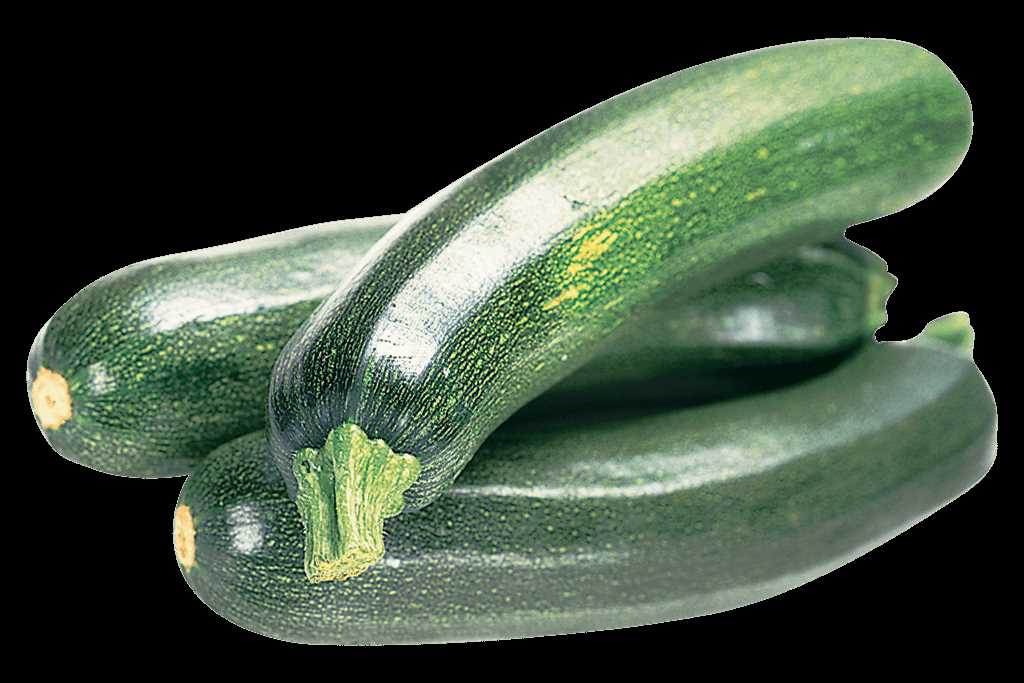
Some courgette varieties are bred for early harvest, while others are best for a long and continuous harvest throughout the season. Consider your preferences and gardening goals when choosing between early or late harvest varieties. If you want to have a steady supply of courgettes throughout the summer, opt for varieties that have a longer fruiting period.
Flavor and Texture
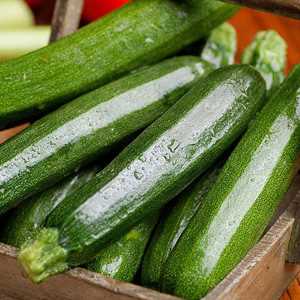
Courgette varieties can vary in flavor and texture, so it’s worth considering your personal preferences. Some varieties may have a sweeter flavor, while others may have a more robust taste. Similarly, the texture of the courgette flesh can differ, with some varieties being more tender and others having a slightly firmer texture. Research the flavor profiles of different courgette varieties to find the ones that suit your taste buds.
Resistance to Diseases and Pests
Another important factor to consider is the resistance of the courgette variety to common diseases and pests. Some varieties are bred to be more resistant to powdery mildew, cucumber mosaic virus, or other common issues that can affect courgettes. Selecting resistant varieties can help minimize the risk of disease and minimize the need for chemical treatments.
Productivity
If you’re aiming for a high yield, look for courgette varieties that are known for their productivity. These varieties tend to produce a larger number of courgettes per plant, allowing you to enjoy a more abundant harvest. Look for varieties with a reputation for high productivity or seek recommendations from experienced gardeners.
Final Thoughts
Choosing the right courgette variety is key to maximizing your harvest. Consider factors such as growing space, desired harvest time, flavor, disease resistance, and productivity when making your selection. By selecting the right variety, you can ensure a successful and rewarding courgette growing season.
Preparing the Soil for Courgette Growth
Before planting courgettes, it is essential to prepare the soil properly. This will provide the necessary nutrients and ensure optimal growth and a bountiful harvest. Follow these steps to prepare the soil for courgette growth:
- Choose a sunny location: Courgettes require plenty of direct sunlight, so select a spot in your garden that receives at least 6-8 hours of sunlight each day.
- Clean the area: Remove any weeds or vegetation from the chosen area to prevent them from competing with the courgette plants for nutrients.
- Loosen the soil: Use a garden fork or a tiller to loosen the soil to a depth of around 12 inches. This will ensure that the roots can easily penetrate the soil and allow for proper drainage.
- Improve drainage: If your soil tends to retain water, consider adding organic matter such as compost or well-rotted manure to improve drainage. This will prevent waterlogged soil, which can lead to root rot and other diseases.
- Test the soil: It is a good idea to test the pH level and nutrient content of your soil. Courgettes prefer a slightly acidic to neutral pH of 6.0-7.0. If your soil is too acidic or alkaline, you may need to adjust it by adding lime or sulfur accordingly.
- Add organic matter: Incorporate organic matter into the soil to boost its fertility. This can be done by spreading a layer of compost, leaf mold, or well-rotted manure over the loosened soil surface and gently mixing it in.
- Remove any debris: Make sure to remove any stones, sticks, or other debris from the soil. These can impede root growth and hinder plant development.
By following these steps and preparing the soil properly, you will create an ideal environment for courgette growth and maximize your harvest.
Planting Courgette Seeds or Seedlings
When it comes to planting courgettes, you have two options: planting seeds or using seedlings. Both methods have their advantages, so choose the one that suits you best.
Option 1: Planting Seeds
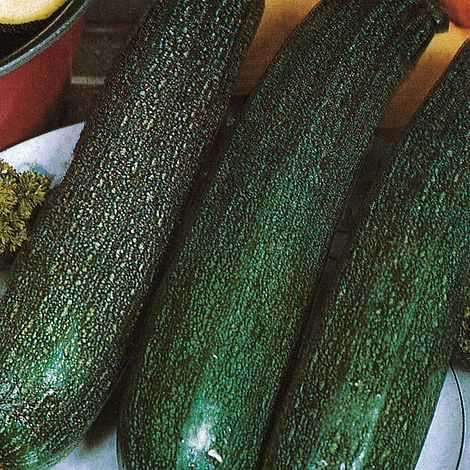
If you prefer starting from scratch, planting courgette seeds is a great option. Here’s how to do it:
- Choose a sunny spot in your garden with well-draining soil.
- Prepare the soil by loosening it and removing any stones or debris.
- Make small holes in the soil about 1 inch deep and 2-3 feet apart.
- Place one or two seeds in each hole and cover them with soil.
- Water the soil gently to keep it moist but not soaked.
After about a week, you should start to see seedlings emerging from the soil. At this point, it’s important to thin them out, leaving only one healthy plant per hole. This will give your courgettes plenty of space to grow.
Option 2: Using Seedlings
If you want to skip the initial stages of germination, you can purchase courgette seedlings from a nursery or garden center. Here’s how to plant them:
- Choose a sunny spot in your garden with well-draining soil.
- Prepare the soil by loosening it and removing any stones or debris.
- Dig holes in the soil that are slightly larger than the root ball of the seedling.
- Place each seedling into a hole and cover the roots with soil, gently firming it around the base.
- Water the seedlings thoroughly to help them establish in their new environment.
Using seedlings allows you to skip the early stages of germination and ensures that you have strong, healthy plants right from the start. Just make sure to water them regularly and provide them with enough space to grow.
Whatever method you choose, planting courgettes is a rewarding and enjoyable experience. With the right care and attention, you can maximize your courgette harvest and enjoy a bountiful supply of this delicious vegetable.
Providing Adequate Watering and Fertilization
Courgettes require consistent and adequate watering to ensure healthy growth and optimum yield. Here are some tips on how to provide proper watering and fertilization for your courgette plants:
1. Watering
- Water your courgette plants deeply, aiming to moisten the soil at least 6 inches deep.
- Water your plants in the morning to allow the foliage to dry before evening, reducing the risk of diseases.
- During hot and dry weather, increase the frequency of watering to prevent the plants from drying out.
- Use a soaker hose or drip irrigation system to provide a slow and consistent supply of water directly to the roots.
- Monitor the moisture levels in the soil by inserting your finger into the ground. If the top inch feels dry, it’s time to water.
2. Fertilization
- Before planting, incorporate compost or well-rotted manure into the soil to improve its fertility and drainage.
- Apply a balanced slow-release fertilizer with a ratio of 10-10-10 or 14-14-14 at the time of planting.
- Once the plants start producing flowers, switch to a fertilizer higher in phosphorus, such as a 5-10-10 or 10-20-20 blend, to promote fruit development.
- Follow the manufacturer’s instructions for the recommended application rates and frequency.
- Avoid over-fertilizing, as this can lead to excessive foliage growth at the expense of fruit production.
By providing adequate watering and fertilization, you can ensure that your courgette plants receive the necessary nutrients to thrive, resulting in a bountiful harvest of courgettes per bush per season.
Ensuring Proper Sunlight and Temperature
Proper sunlight and temperature are crucial for maximizing your courgette harvest. Here are some tips to ensure your plants receive the right amount of sunlight and maintain the appropriate temperature:
1. Location Selection
- Choose a sunny spot in your garden or yard for planting your courgette bushes.
- Avoid areas shaded by trees or buildings as they can block the sunlight.
- Ensure the location receives at least 6-8 hours of direct sunlight every day.
2. Orientation
- Plant your courgette bushes in a way that allows them to receive maximum sunlight.
- Align the rows of bushes in a north-south direction to minimize shading between plants.
3. Temperature Control
- Courgette plants thrive in warm temperatures between 18-26°C (65-80°F).
- Use a thermometer to monitor the temperature in your garden or greenhouse.
- Protect plants from extreme temperatures by using shade cloths, row covers, or cold frames.
- Water the plants regularly to cool them down in hot weather.
4. Mulching
- Apply a layer of organic mulch, such as straw or wood chips, around the courgette plants.
- Mulch helps regulate soil temperature and conserves moisture, creating a favorable growing environment.
5. Monitoring and Adjusting
- Regularly assess the sunlight and temperature conditions in your courgette garden.
- Make adjustments as needed, such as relocating plants to sunnier areas or using shading devices during hot spells.
By ensuring proper sunlight and maintaining favorable temperatures for your courgette plants, you’ll create an optimal growing environment and increase your harvest yield.
Pruning and Training Courgette Plants
Pruning and training your courgette plants can help maximize your harvest and improve the overall health and productivity of the plants. Here are some tips for pruning and training your courgette plants:
1. Removing Side Shoots
Regularly check your courgette plants for side shoots that might develop between the main stem and the leaf stems. These side shoots can divert energy away from the main plant, so it’s important to remove them promptly. Use a clean pair of pruning shears or scissors to carefully cut off the side shoots close to the main stem.
2. Pinching Out the Growing Tips
To encourage bushier growth and increase the number of courgettes per bush, consider pinching out the growing tips of your courgette plants when they reach a height of about 40-50cm. This will redirect the plant’s energy to the production of more lateral shoots, resulting in a higher courgette yield.
3. Training the Main Stem
As your courgette plants grow, it’s important to provide support for the main stem to prevent it from bending or breaking under the weight of the fruit. You can use bamboo stakes or trellis to gently tie the main stem to provide support and keep it upright.
4. Regular Watering and Feeding
Pruning and training your courgette plants is just one part of maximizing your harvest. Ensure that your plants receive regular watering to keep the soil moist but not waterlogged. Additionally, feed your plants with a balanced fertilizer to provide the necessary nutrients for growth and fruit production.
5. Mulching
Applying a layer of mulch around the base of your courgette plants can help conserve moisture, suppress weeds, and regulate soil temperature. Mulching also helps improve the overall health of the plants and can contribute to a more abundant harvest.
6. Regular Inspections and Maintenance
Keep an eye on your courgette plants for any signs of pests or diseases. Regularly inspect the leaves, stems, and fruit for any abnormalities and take necessary measures to address any issues that may arise. Additionally, remove any dead or yellowing leaves to promote healthy growth and prevent the spread of diseases.
By following these pruning and training practices, you can help maximize the yield of your courgette plants and enjoy a bountiful harvest of delicious courgettes.
Monitoring and Managing Pests and Diseases
Keeping an eye on pests and diseases is crucial to maximize your courgette harvest. By detecting and managing these issues early on, you can prevent them from spreading and causing significant damage to your plants.
1. Regular Inspections
Performing regular inspections of your courgette plants is essential to identify any signs of pests or diseases. Look out for common pests such as aphids, whiteflies, slugs, and snails. Also, keep an eye out for diseases like powdery mildew, blight, and mosaic viruses.
2. Companion Planting
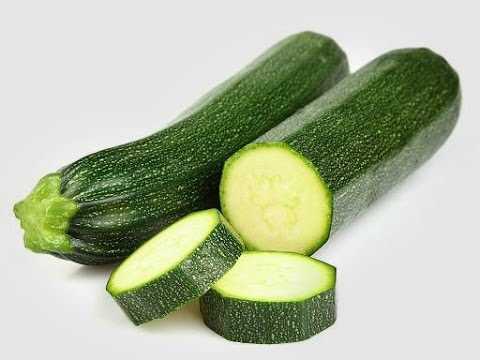
Consider companion planting with plants that naturally repel pests or attract beneficial insects. For example, planting marigolds or nasturtiums near your courgette plants can help deter insects. Additionally, planting herbs such as basil and dill can attract beneficial insects like ladybugs, which feed on aphids.
3. Organic Pest Control
If you notice an infestation of pests, it’s important to control them using organic methods. Avoid using chemical pesticides as they can harm beneficial insects and contaminate your harvest. Instead, try solutions like neem oil or insecticidal soap, which are effective against common pests and safe for plants and beneficial insects.
4. Proper Watering and Fertilization
Providing your courgette plants with adequate water and nutrients can help them stay healthy and less susceptible to pests and diseases. Water your plants regularly, but avoid overwatering, as this can lead to root rot and other fungal diseases. Additionally, fertilize your plants with organic compost or well-balanced fertilizers to ensure they have the necessary nutrients for optimal growth.
5. Crop Rotation
Practicing crop rotation is crucial to prevent the buildup of pests and diseases in the soil. Avoid planting courgettes in the same spot for consecutive years, as this can attract pests and diseases that have overwintered in the soil. Instead, rotate your crops yearly, planting courgettes in a different location in your garden.
6. Mulching
Applying a layer of organic mulch around your courgette plants can help suppress weeds and retain moisture in the soil. This can prevent pests and diseases from spreading through contact with infected weeds and reduce the risk of moisture-related diseases.
7. Early Intervention
If you detect any signs of pests or diseases on your courgette plants, take immediate action. Remove any infected leaves or plants to prevent the spread of diseases, and manually remove pests by handpicking or using a stream of water. Acting early can help prevent the problem from worsening and minimize the impact on your harvest.
By regularly monitoring your courgette plants for pests and diseases and taking appropriate measures to manage them, you can maximize your harvest and enjoy a bountiful supply of delicious courgettes.
Harvesting Courgettes at the Optimal Time
Why is timing important?
Harvesting courgettes at the optimal time is crucial for maximizing your yield and ensuring the best flavor and texture. Picking them too early or too late can result in smaller or tougher fruits.
How to determine when to harvest courgettes?
Here are a few guidelines to help you determine when your courgettes are ready to be harvested:
- Size: Courgettes are usually harvested when they are 6-8 inches long. At this stage, they are tender and have a mild flavor.
- Color: Look for courgettes that have a vibrant and glossy green color. Avoid picking courgettes that have a yellowish hue, as they may be overripe.
- Texture: Gently press your finger against the skin of a courgette. If it leaves an indentation, it is likely ready to be harvested. If the skin feels hard and doesn’t give, give the courgette more time to mature.
Steps for harvesting courgettes
Follow these steps to ensure a successful harvest:
- Using a sharp knife or pruners, cut the courgettes from the vine, leaving a short stem attached.
- Handle the courgettes with care to avoid bruising or damaging the fruit.
- Inspect each courgette for any signs of disease or damage. Discard any fruits that appear unhealthy.
- Place the harvested courgettes in a basket or container. Avoid stacking them to prevent them from getting squished.
How often should you harvest courgettes?
Courgettes are known for their rapid growth, so it’s important to check your plants daily and harvest the fruits as soon as they reach the desired size.
How to store harvested courgettes?
Harvested courgettes should be stored in a cool and dry place, away from direct sunlight. If you have harvested more than you can consume immediately, you can also store them in the refrigerator for up to a week.
Conclusion
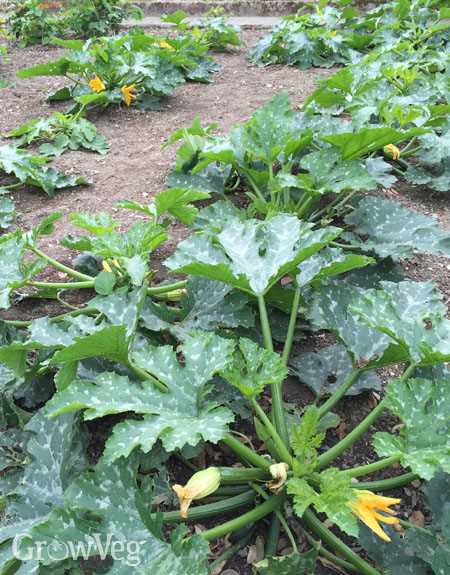
By harvesting courgettes at the optimal time, you can ensure a bountiful harvest and enjoy the best taste and texture. Remember to follow the guidelines for size, color, and texture and handle the fruits with care during the harvesting process.
“Question-Answer”
What is the best way to maximize your courgette harvest?
The best way to maximize your courgette harvest is to plant your courgette bushes in a sunny spot with well-draining soil. Make sure to water your plants regularly and provide them with enough space to grow. You can also add compost or organic fertilizer to improve the soil quality.
How often should I water my courgette plants?
Courgette plants should be watered regularly, especially during hot weather. It is important to keep the soil evenly moist, but not waterlogged. Check the moisture level of the soil by inserting your finger into the soil. If it feels dry up to the first knuckle, it’s time to water the plants.
Can I grow courgettes in containers?
Yes, you can grow courgettes in containers as long as the container is large enough to accommodate the plant’s root system. Use a high-quality potting mix and make sure the container has drainage holes at the bottom to prevent waterlogging. Place the container in a sunny area and water the plant regularly.
Do courgette plants need support?
Most courgette varieties do not require support, as they have sturdy stems that can support the weight of the fruits. However, if you are growing a vining variety or if your plants are in a windy area, it is advisable to provide some support, such as a trellis or stakes, to prevent the plants from falling over.
How can I prevent pests from damaging my courgette plants?
There are several ways to prevent pests from damaging your courgette plants. You can use row covers to physically block pests from reaching the plants. Plant companion plants, such as marigolds or nasturtiums, which can deter pests. Regularly inspect your plants for signs of pests and manually remove them if necessary. You can also use organic pest control methods, such as neem oil or insecticidal soap.







